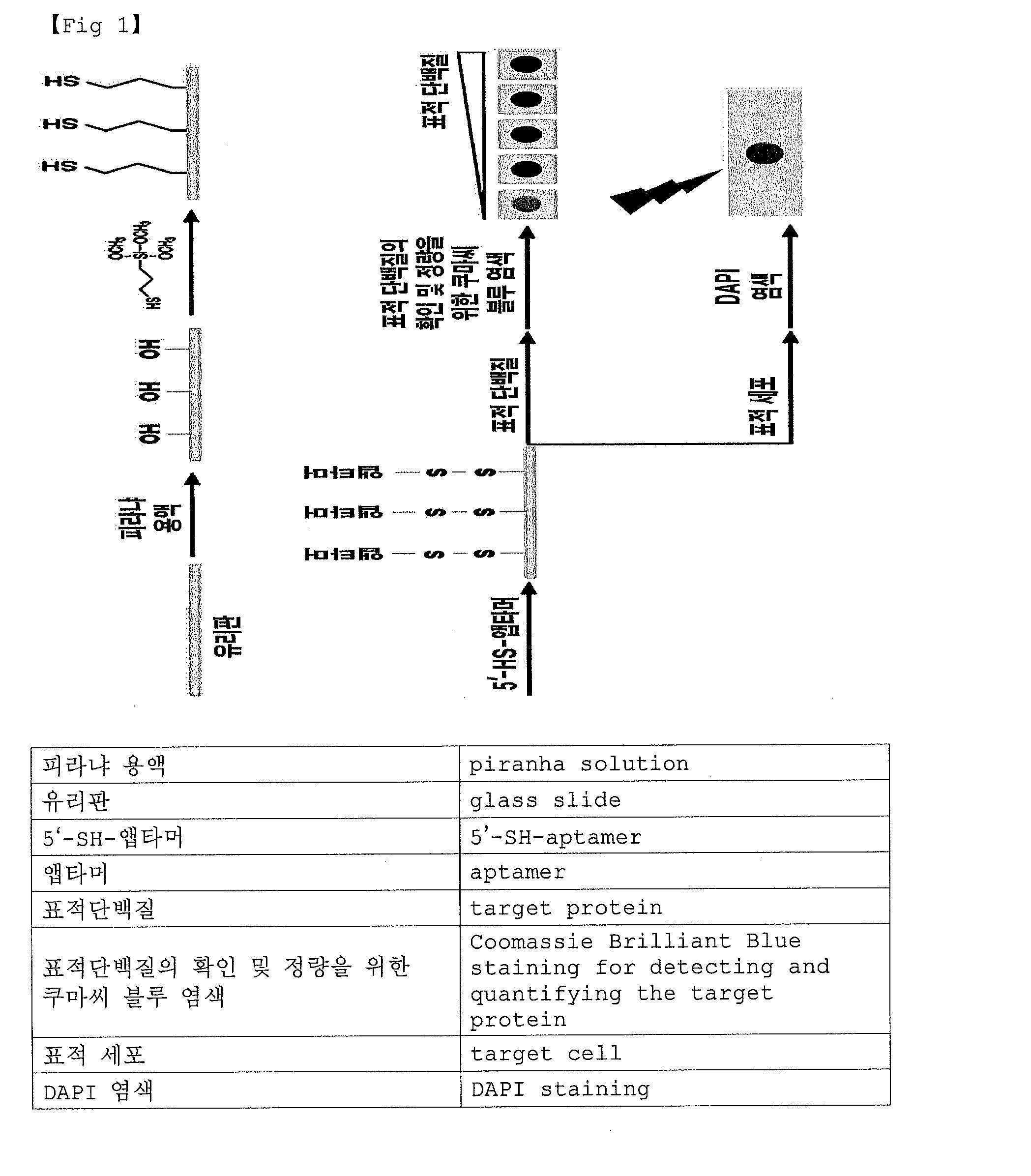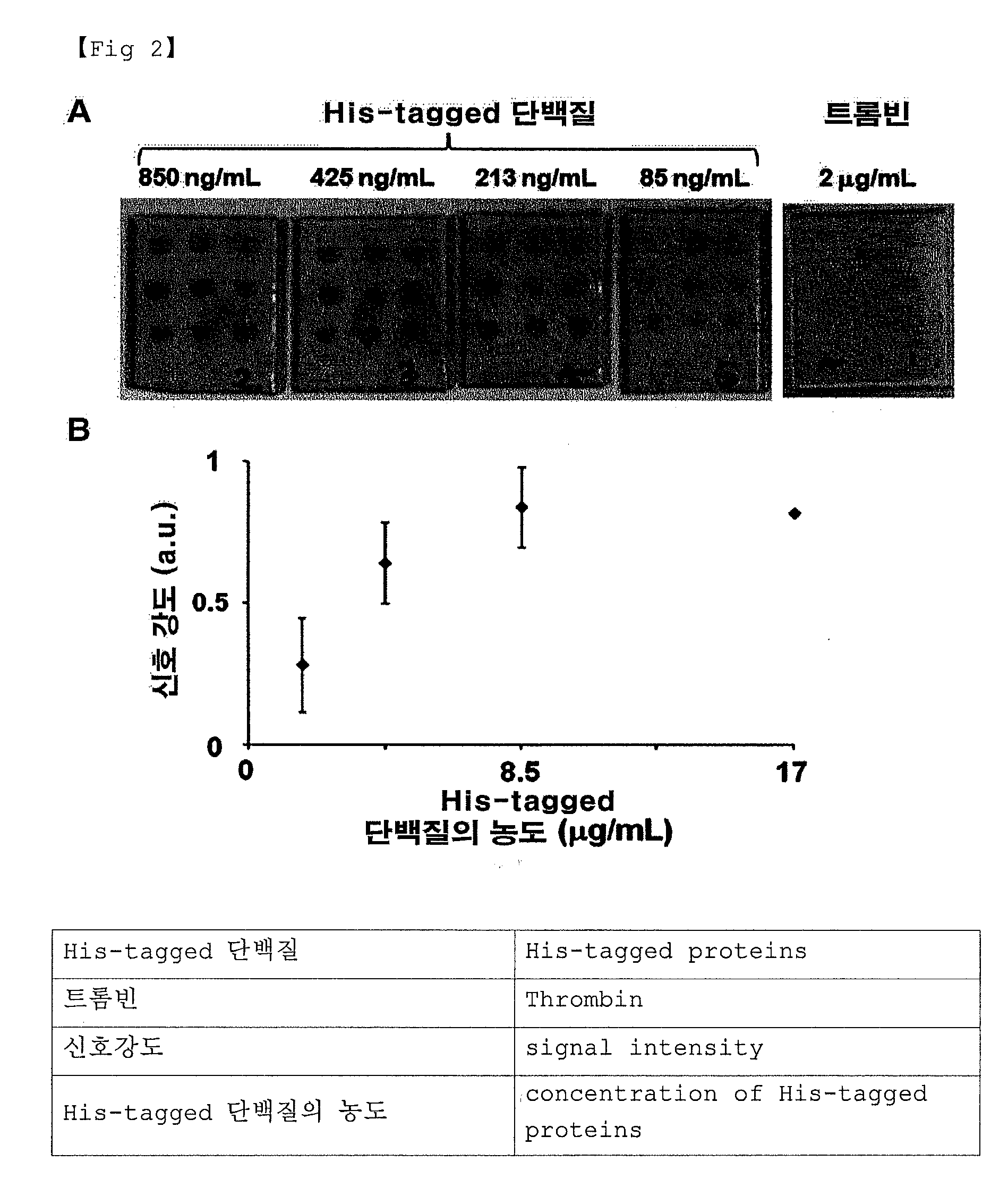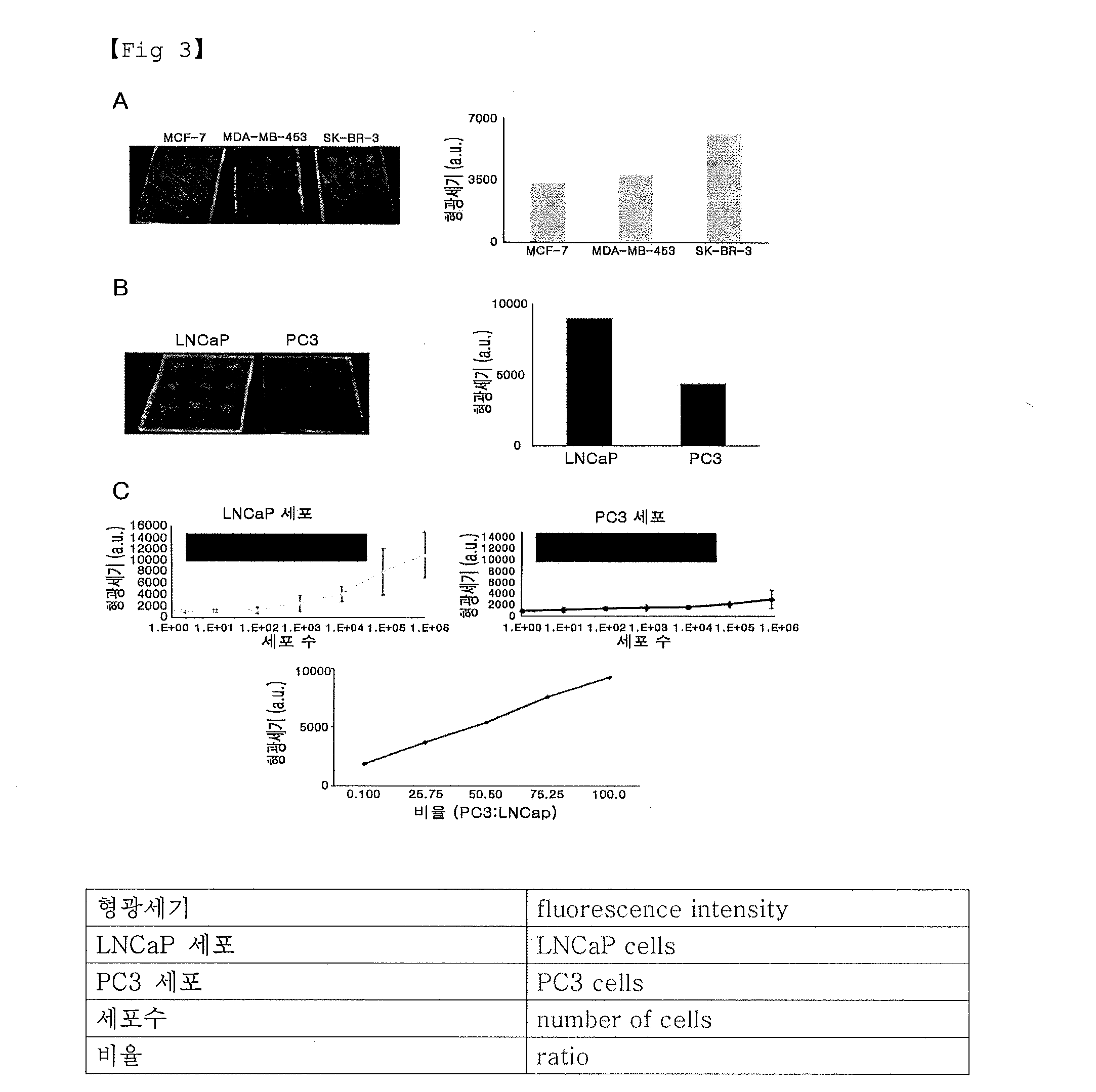Method for detecting and quantifying a target protein or a target cell using an aptamer chip
a technology of target protein and aptamer chip, which is applied in the field of detecting or quantifying a target protein or a target protein using an aptamer chip, can solve the problems of low economic value of microarray in terms of use of microarray, inability to maintain a constant form, and techniques that limit the detection of micro to nano-molar level, etc., to achieve low detection limit and background signal, reduce disulfide bonding, and high sensitivity
- Summary
- Abstract
- Description
- Claims
- Application Information
AI Technical Summary
Benefits of technology
Problems solved by technology
Method used
Image
Examples
example 1
Preparing Reagents and Equipment
[0080]Chemicals used in the present invention were purchased from supplier companies, and used without additional purification. Deionized water treated by DEPC (diethyl pyrocarbonate) was used in all experiments. UV absorption was measured via Agilent 8453 UV-Visible spectrometer. All experiments were performed two times.
example 2
Manufacturing an Aptamer
[0081]2-1. Manufacturing an Aptamer for Detecting His-Tagged Proteins
[0082]In order to bind an aptamer selectively to His-tagged proteins, a RNA aptamer with a thiol group at the 5′ end is manufactured by the following method.
[0083]The RNA aptamer combining specifically with His-tagged proteins was synthesized using complementary oligonucleotide (5′-GCCAG CTCCC GGGGC CAATC CCAAC CAGAC CACCC ATAGC CCCCC CTATA GTGAG TCGTA TTAGT CC-3′, Sequence ID NO 1) containing T7 promotor sequence at the 5′ end. The synthesized RNA aptamer sequence is as follows:
Sequence ID NO 2:5′-GCUAU GGGUG GUCUG GUUGG GAUUG GCCCC GGGAGCUGGC-3′.
[0084]The synthesized RNA aptamer was attached to a thiol group (—SH) at the 5′ end using the method provided by shin et al., and Kim et al. (shin et al., Bioorg. Med. CHem. Lett., 2010, 20: 3322-3325; Kim et al., Tet. Lett., 2010, 51: 3446-3448). To be more specific, 5′ end was modified to a thiol group using an enzyme in order to introduce a thio...
example 3
[0088]An aptamer chip was prepared by applying the pre-existing method in another thesis (Lee and Hah, Bioorg. Med. Chem. Lett., 2012, 22: 1520-1522; Chen et al., Biosensors and Bioelectronics, 2007, 22: 926-932).
[0089]Briefly, the surface of a glass slide (1.5 cm×2 cm) was cleaned by treatment of piranha solution (when the whole piranha solution is 1, 30% H2O2 solution is 0.3, H2SO4 solution is 0.7; Stavyiannoudaki et al., Anal. Bioanal. Chem., 2009, 395: 429-435) at 80° C. for 1 hour. Then, the slide was washed repeatedly by deionized water at room temperature, and then sonication was performed on the slide for 20 minutes. Additionally, after desiccating the glass slide at 100° C. oven for 1 hour, the glass slide was immersed in ethanol solution (MPTMS:EtOH=1:20) treated by MPTMS ((3-mercaptoptopyl)trimethoxysilane) for introducing a thiol group on the surface. After 15 minutes, 600 μl of 0.01 M NaOH aqueous solution was put in ethanol solution treated...
PUM
| Property | Measurement | Unit |
|---|---|---|
| size | aaaaa | aaaaa |
| concentration | aaaaa | aaaaa |
| pH | aaaaa | aaaaa |
Abstract
Description
Claims
Application Information
 Login to View More
Login to View More - R&D
- Intellectual Property
- Life Sciences
- Materials
- Tech Scout
- Unparalleled Data Quality
- Higher Quality Content
- 60% Fewer Hallucinations
Browse by: Latest US Patents, China's latest patents, Technical Efficacy Thesaurus, Application Domain, Technology Topic, Popular Technical Reports.
© 2025 PatSnap. All rights reserved.Legal|Privacy policy|Modern Slavery Act Transparency Statement|Sitemap|About US| Contact US: help@patsnap.com



